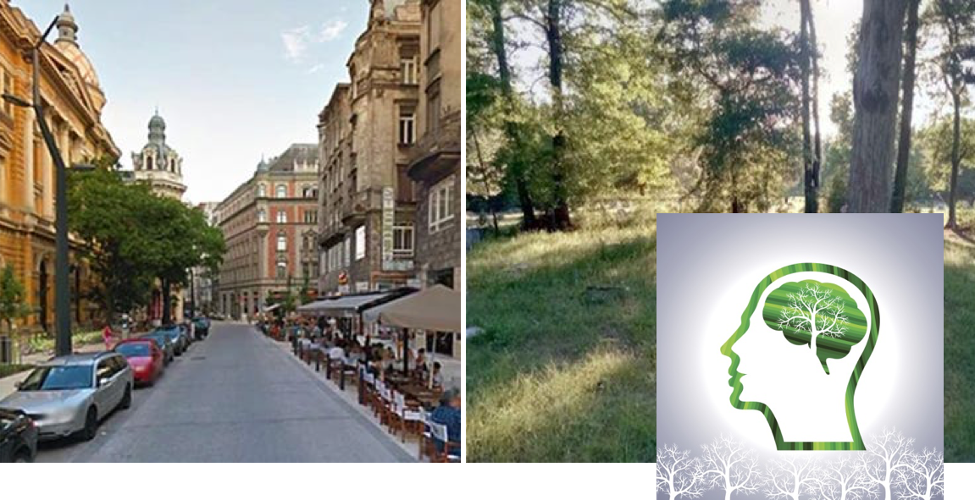Investigating the Association between Environmental Characteristics and Psychological Well-Being

Project Information
ai, api, data-analysis, gis, image-processing, machine-learning, programming, programming-best-practices, pythonProject Status: Complete
Project Region: CAREERS
Submitted By: Galen Collier
Project Email: fqi@kean.edu
Project Institution: Kean University
Anchor Institution: CR-Rutgers
Project Address: 1000 Morris Ave
Union, New Jersey. 07083
Mentors: Udi Zelzion
Students: Yisha Zhang
Project Description
Characteristics of the environment affect our psychological and general well-being. Natural elements and green space in the environment, for example, promote stress reduction and lower the risk of stress-related diseases. While the environment’s psychological impacts on humans have been widely studied, many questions remain unanswered. For example, little is known about the roles that specific characteristics of the environment play in promoting health benefits and how such relationships are moderated by factors such as sociocultural backgrounds, individuals’ dispositions, and ways of relating to emotional experiences.This study investigates the objective characteristics of environmental settings and subjective perceptions of such settings among individuals with different identities and stances toward their emotional experiences. We use Google Street View (GSV) images to represent a variety of everyday environments people encounter. The images will be used for immersive visualization in the Visualization and Immersive Studio for Education and Research (VISER) at Kean University.
Participants will be recruited to immerse in the virtual environment and answer questions about their perceptions of the environment and related psychological measures. The GSV images will be analyzed through image analysis to derive quantitative measures of the environmental characteristics using methods such as semantic segmentation. A machine learning approach such as deep learning will be adopted. Traditional statistical analysis and nonparametric methods will be used to explore the relationships between characteristics of the environment and aspects of psychological well-being. The findings offer practical implications for urban environmental design and can also be incorporated into ubiquitous computing technologies with mobile devices to provide real-time aids to people engaged in outdoor activities.

Project Information
ai, api, data-analysis, gis, image-processing, machine-learning, programming, programming-best-practices, pythonProject Status: Complete
Project Region: CAREERS
Submitted By: Galen Collier
Project Email: fqi@kean.edu
Project Institution: Kean University
Anchor Institution: CR-Rutgers
Project Address: 1000 Morris Ave
Union, New Jersey. 07083
Mentors: Udi Zelzion
Students: Yisha Zhang
Project Description
Characteristics of the environment affect our psychological and general well-being. Natural elements and green space in the environment, for example, promote stress reduction and lower the risk of stress-related diseases. While the environment’s psychological impacts on humans have been widely studied, many questions remain unanswered. For example, little is known about the roles that specific characteristics of the environment play in promoting health benefits and how such relationships are moderated by factors such as sociocultural backgrounds, individuals’ dispositions, and ways of relating to emotional experiences.This study investigates the objective characteristics of environmental settings and subjective perceptions of such settings among individuals with different identities and stances toward their emotional experiences. We use Google Street View (GSV) images to represent a variety of everyday environments people encounter. The images will be used for immersive visualization in the Visualization and Immersive Studio for Education and Research (VISER) at Kean University.
Participants will be recruited to immerse in the virtual environment and answer questions about their perceptions of the environment and related psychological measures. The GSV images will be analyzed through image analysis to derive quantitative measures of the environmental characteristics using methods such as semantic segmentation. A machine learning approach such as deep learning will be adopted. Traditional statistical analysis and nonparametric methods will be used to explore the relationships between characteristics of the environment and aspects of psychological well-being. The findings offer practical implications for urban environmental design and can also be incorporated into ubiquitous computing technologies with mobile devices to provide real-time aids to people engaged in outdoor activities.